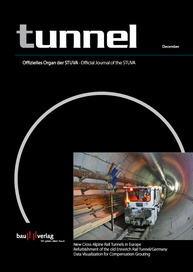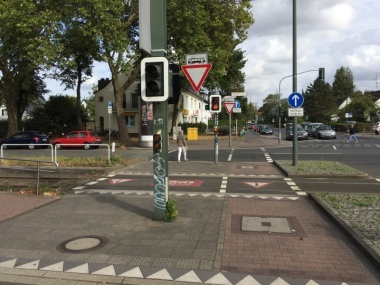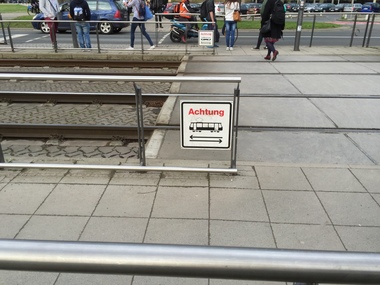New Research Project “Safer Junctions for more vulnerable Road Users” with STUVA Involvement
Under the guidance of the Bergische Universität Wupper-tal, Institute for Road Traffic Planning and Technology (management) as well as in cooperation with the Leibnitz Institute for Work Research at the TU Dortmund (IfADo), project group “Aging and Changes to the ZNS” the STUVA is involved in the research project “Safer Junctions for more vulnerable Road Users”. The study, which lasts 2 years, has been commissioned by the German Insurance Association (GDV).
More than a half of the accidents occurring in built-up areas take place at a junction. 1/3rd of these accidents occur at junctions regulated by traffic lights, the half at junctions governed by right-of-way and the remainder at junctions with right-before-left priority. In this connection accident statistics do not reflect the exact picture. An example is provided by a lack of lowered pavements for wheel-chair users at crossing points. This can lead to a wheel-chair user being unable to leave the road quickly enough, nonetheless an accident involving a wheel-chair user crossing the road and a motor vehicle happens very seldom. The view is gradually gaining acceptance that traffic zones are not sufficiently commensurate with the needs of more vulnerable road users.
“More vulnerable road users” include children as well as older people and those with restricted mobility. They are frequently at a disadvantage on roads on account of their physical and cognitive limitations. The fact that these groups of persons particularly often sustain serious injuries on foot or on bicycles (children), which are sometimes fatal (older road users) makes it all the worse. In the case of older people the increased mortality risk given the same type of accident acts as an additional negative factor as far as the consequences of accidents are concerned. Thus e.g. in 2006 every second pedestrian or cyclist who was killed was at least 65 years old. As far as children are concerned roughly 1/3rd sustained accidents while riding a bike, 1/4 as pedestrians. In this connection junctions possess an especially high risk potential. For persons with restricted mobility the following applies: if one considers the overall picture of what occurs on the roads admittedly accidents affecting this group of persons seldom happen; however there is a considerably greater risk of accident compared to other groups.
The high potential danger risk for the above mentioned groups can result for a number of reasons. Possibly the needs of children, older people and those with restricted mobility are not sufficiently taken into account in the codes of practice when traffic areas are designed. A further aspect could be that the scope potentially available in the rules of the codes of practice is not always interpreted in the interests of more vulnerable road users, as e.g. disadvantages for the flow of traffic (performance capacity) are feared. Many deficits in safety first ensue during the planning stage or putting it into practice. Findings from evaluating pilot studies when it comes to the qualification of safety auditors testify to this.
The research project’s objective is to test the design of junctions with respect to the needs of more vulnerable road users, put forward concrete proposals for designing them in future and point to a need for action regarding the corresponding codes of practice. The research project is scheduled to wind up at the end of 2011.





